
Background information
From volcanoes to the Alps – when Mexican design meets Swiss expertise
by Pia Seidel

Mia's demeanour makes me want to stand next to her so that I can experience her positive charisma. Her portfolio is in no way inferior to her appearance. You will want to move into flats designed by this multi-faceted interior designer.
After meeting Mia Kepenek for the first time at the Milan Furniture Fair and seeing her employees, I couldn't wait to visit her back in Zurich and pepper her with questions. The list of her projects is long and varied. It includes furniture concepts, exhibition designs as well as shop, office, home design and interior design.
I meet her shortly before midday in her office in Binz. A Zurich neighbourhood where many creative studios are based. My expectations are correspondingly high and are even exceeded: Mia Kepenek's flair for design and cosiness translates itself into a coworking space that she shares with other architects and graphic designers. With apothecary bottles or charming bottle openers that pass as sculptures, she breathes personality into the open space.
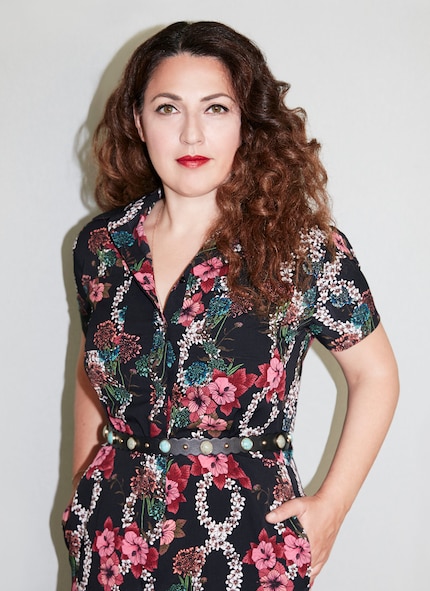
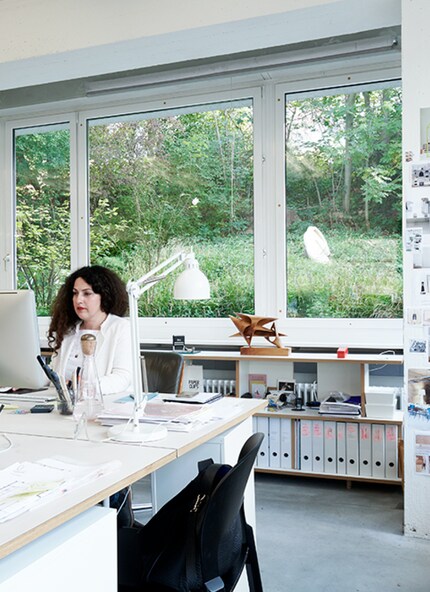
You originally trained as a carpenter. What made you decide to become an interior designer later on?Mia Kepeneks, architect: I actually wanted to emigrate to Australia to join my brother after finishing school in Stuttgart. With an apprenticeship in a trade, you should have better opportunities there. That's why I initially opted for a carpentry apprenticeship - to my parents' horror. But I have stayed in Europe to this day. I really enjoyed the apprenticeship and learnt everything from furniture construction to assembly. That was the first important cornerstone of my career. As I have always had a diverse interest in spaces, their inhabitants and their identities, studying interior design and scenography were the next logical steps for me. I then went on to study architecture. I was able to continue to pursue my love of craftsmanship on the side, for example by restoring modern and contemporary furniture.
Do you think you would be missing something today if you had gone straight into interior design?
I am very happy about my background and the individual path I took. Thanks to my carpentry apprenticeship, I now have a better understanding of craftsmanship and real materials. This also flows into my projects. However, the apprenticeship has not only shaped my handwriting, but is also often a great advantage in my current employees when communicating with service providers. It was a school for life and provides me with a good foundation. My diverse background enables me to take an unconventional approach to projects and keep an eye on the big picture. My training as a scenographer and my experience in stage and set design also play a major role in this.
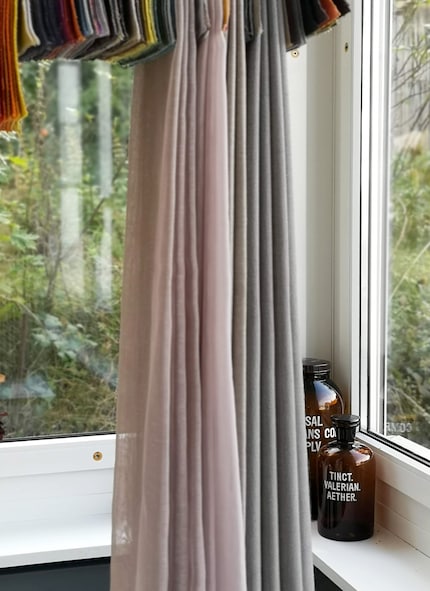
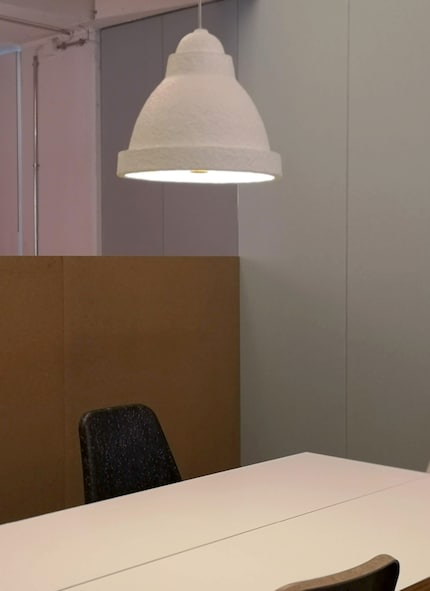
What projects are you currently interested in?
I'm particularly interested in corporate architecture and identities for companies, but also for private living spaces. Nowadays, there is an ever-increasing blurring between public and private space. The reason for this is that living space is becoming increasingly scarce, especially in cities, and living concepts are becoming more and more flexible. Playing with these "new" living spaces is an exciting challenge for me. The question increasingly arises as to where private space begins, where it ends and where there can and should be overlaps.
How would you describe the corporate design of your studio and your personal signature?
I have deliberately kept the corporate design of my office simple and timeless; it is the individual projects that should be emphasised here. A CD that is too eye-catching would only be a distraction. With the portraits of me and my team, however, it was important to me not to uniformise, but to show authenticity. This also characterises the handwriting visible in my projects.
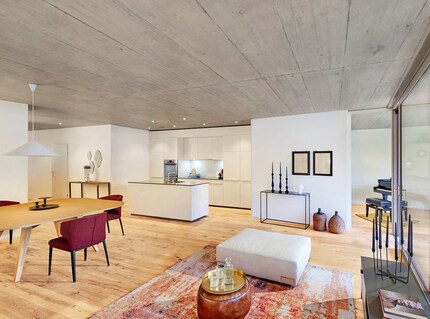
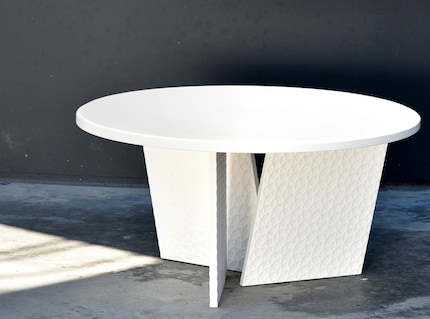
You recently developed a table together with the material manufacturer "Strasserthun" and won the German Design Award 2018 in the "Excellent Product Design" category. To what extent are product design and interior design connected for you?For me, there is a very strong connection between these two areas. In an interior design project, the focus is always on the future use of the space. That's why we think about products from the outset. As rooms are often used several times nowadays, we are increasingly moving away from fixed fixtures and fittings and flexible, changeable elements are gaining in importance. For certain projects, we develop customised products ourselves. Sometimes, however, we also create products that are later produced in series, such as the table in collaboration with "Strasserthun".
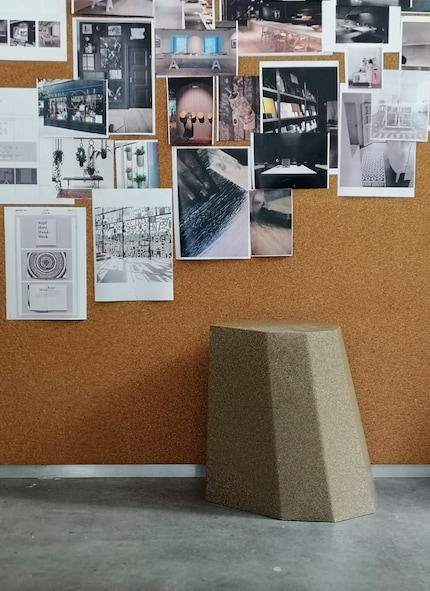
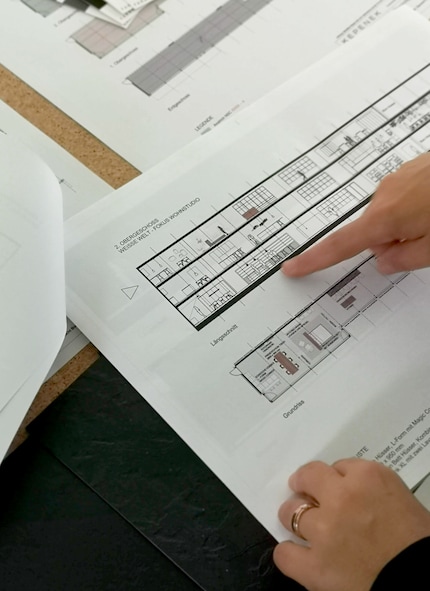
How do you manage to respond to customers, even if they have unconventional ideas?Every project is unique to me and so is my approach. I try to combine the right elements in such a way that the individuality and needs of my customers are optimally emphasised. Unconventional ideas are more than welcome, are taken on board and can be incorporated. Of course, there are also those that cannot be realised because they are not functional or technically feasible or are beyond the financial scope. This is where my craftsmanship and technical knowledge and many years of experience help me to convince my customers.
Have you noticed a change in your customers' requirements today compared to when you started your career?Our living spaces always reflect the social and cultural state of our society. Today more than ever, my projects are characterised by change, individualisation and complexity. Compared to the beginning of my career, new forms of living are gaining in importance. Hybrid places, holistic spatial experiences, smart living and healthy living are aspects that we have to take into account in our work today. As a result, the tasks have become more multifaceted and complex. But economic aspects and dependencies have also become more important.
You've been self-employed for six years now. What do you value most about being your own boss?As an independent interior designer, I can define my own areas of responsibility and decide where I want to apply my specialist knowledge. I have greater responsibility but also more freedom to make decisions and scope for individual projects. I work in a very networked way and collaborate with various specialists on specific projects - I can choose them myself, provide my own input and steer the projects in the way I want and find useful.
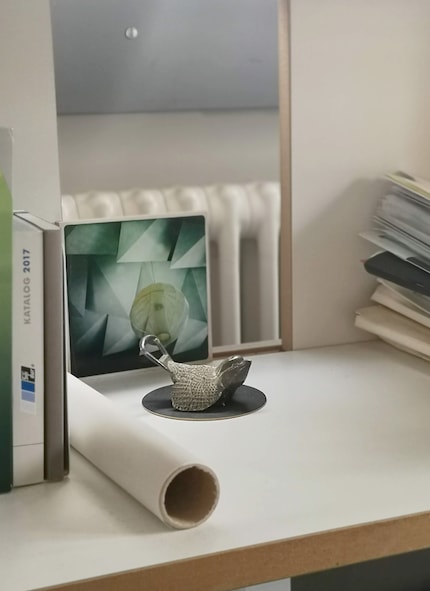
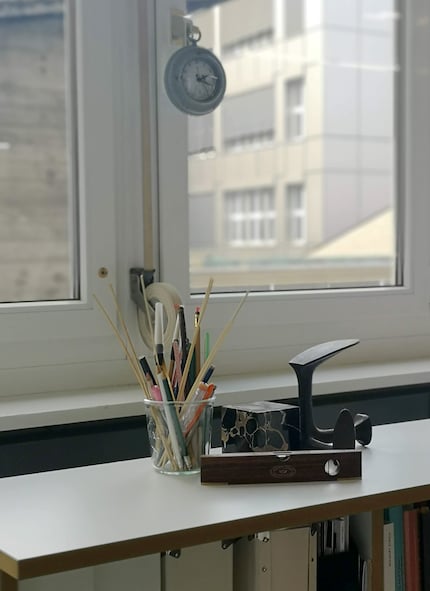
Mia Kepenek is to be envied for her professional freedom - and those who are allowed to move around in the projects she has designed. Follow her on Instagram for insights into her work or ask her your interior design questions in the comments column.
You liked the article? Then follow me for updates in the Interior section so you don't miss anything. Just press the black button on my profile. I look forward to your plan.
Like a cheerleader, I love celebrating good design and bringing you closer to everything furniture- and interior design- related. I regularly curate simple yet sophisticated interior ideas, report on trends and interview creative minds about their work.